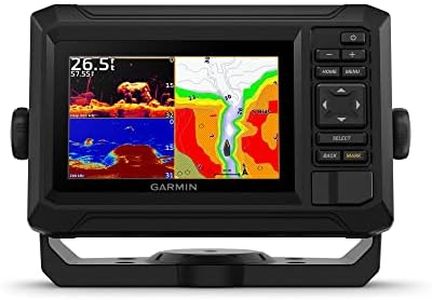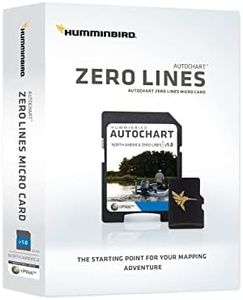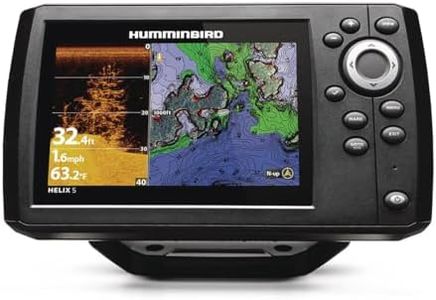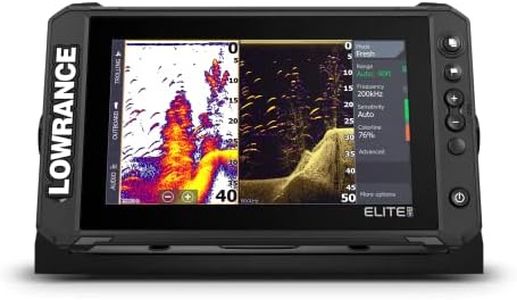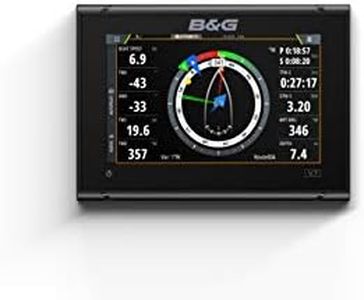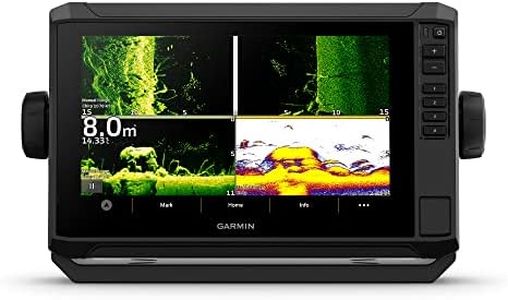We Use CookiesWe use cookies to enhance the security, performance,
functionality and for analytical and promotional activities. By continuing to browse this site you
are agreeing to our privacy policy
10 Best Gps Chartplotters
From leading brands and best sellers available on the web.Buying Guide for the Best Gps Chartplotters
Choosing the right GPS chartplotter can make a big difference in your boating experience. A chartplotter is a navigation device that combines GPS data with electronic charts, helping you plot routes, see your position on the water, and navigate safely. To find the best chartplotter for your needs, it’s important to understand your boating habits: are you cruising on lakes, venturing offshore, or fishing in unfamiliar waters? Think about how much information you need displayed, how much space you have at the helm, and how you want to interact with your device. Below are some of the key features and specifications to consider when comparing GPS chartplotters.Screen Size and ResolutionScreen size refers to the diagonal measurement of the display, while resolution describes how clear the image will be. Larger and higher resolution screens make maps, waypoints, and data easier to read, which is particularly useful in bright sunlight or rough conditions. Small screens (under 7 inches) are great for small boats or kayaks with limited mounting space, while medium screens (7 to 12 inches) suit most recreational boats, and large screens (12 inches or more) are often found on big boats with dedicated helm stations. Choose a screen that fits your available space and provides comfortable visibility given your typical boating conditions.
Chart CompatibilityChart compatibility refers to which electronic charts the chartplotter can use, such as coastal, lake, or river maps. Some units come with charts preloaded, while others require you to buy separate chart cards. High-end chartplotters may allow you to use multiple chart formats or update charts regularly for accuracy. If you primarily boat in one area, preloaded regional charts might be enough, but frequent travelers or those seeking the latest navigational data should look for flexible chart support and easy update options.
GPS Accuracy and UpdatesGPS accuracy explains how precisely the chartplotter can determine your location. This is influenced by the quality of the internal GPS receiver and how often it refreshes its position (update rate). Basic devices update once per second and provide accuracy within several meters, while more advanced units refresh multiple times per second and use multi-band or correction technologies for better precision. If you need real-time tracking for fast maneuvering or detailed navigation in tight spots, prioritize high update rates and enhanced accuracy. For general cruising, standard GPS should suffice.
Connectivity and NetworkingConnectivity covers how your chartplotter can link to other devices, like radar, sonar, autopilots, or mobile apps. Basic units stand alone, while advanced chartplotters use network connections (such as NMEA 2000, Wi-Fi, or Ethernet) to share data across multiple screens or with other electronics on board. If you want all your systems linked and information flowing freely, choose a chartplotter with strong networking features. Solo boaters or those with simple setups may not need these capabilities.
Touchscreen vs. Keypad OperationThis refers to how you interact with the device: either through buttons and knobs (keypad) or by touching the screen (touchscreen). Touchscreens offer fast, intuitive operation, especially for dragging maps or inputting data, but can be harder to use with wet or gloved hands. Keypad controls are more tactile and reliable in rough weather or for quick adjustments. Some units combine both. Think about how you use your chartplotter most often and choose the interface that will be easiest and safest for your needs.
Waterproofing and DurabilityWaterproofing and durability indicate how well the chartplotter resists water, salt, and sun exposure. Devices are typically rated according to water-resistance standards. Models with higher ratings withstand heavy rain, spray, or accidental splashes, which is essential in open boats or harsh marine environments. If your device will be exposed to the elements, look for solid waterproof and ruggedness ratings, but if it’s mounted inside a cabin, these features may be less critical.
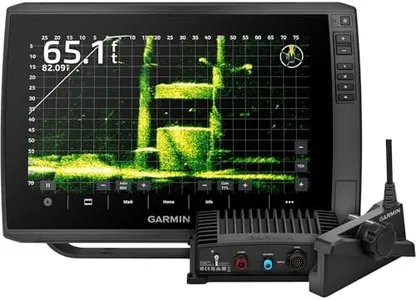
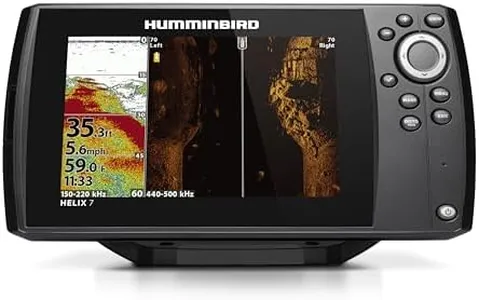
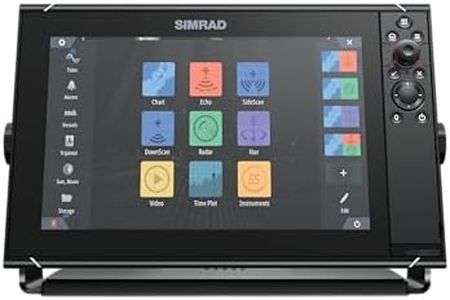
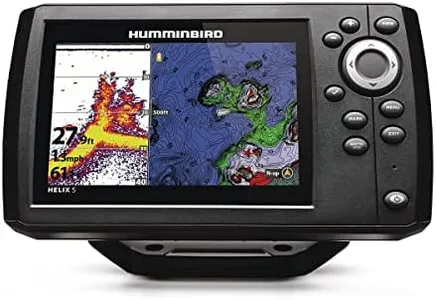

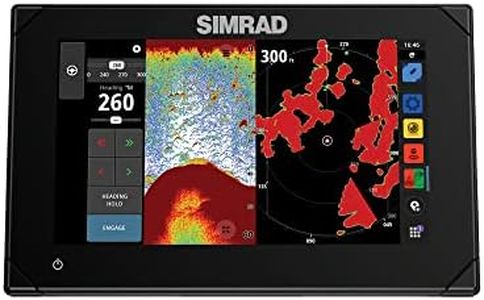
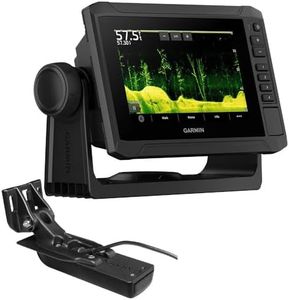
![Garmin ECHOMAP UHD2 74CV Chartplotter/Fishfinder with US Coastal Maps and GT20-TM [010-02595-51]](https://images-proxy.bestreviews.guide/BrmUY2rVynYGDvdorR2EflCkayM=/0x300/https://m.media-amazon.com/images/I/31JKg8LS8mL._AC_CX679_.jpg)
